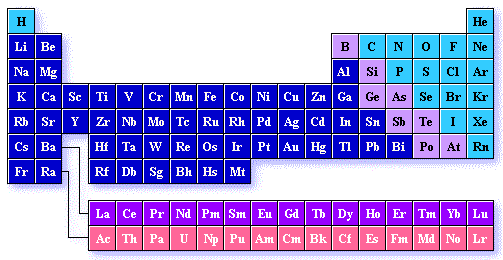It’s Tuesday, April 16th, 2019, and time for Science in our classroom and as I was looking up resources for Charlie and I to use I thought you might want to check the resources out as well.

Age Range: 8-18 (Grades 3-12, with parental supervision) This website provides a virtual exploration of the critters living in pond scum.
When you get to the site, simply click on the links in the text to see remarkable photographs and learn about:
- protozoan
- paramecium
- actinopods
- vorticella
- anchor worms
- fly larvae, amoeba
- water mites
- algae
- and other single-celled and multi-celled oddities
All of this comes to you courtesy of a retired Computer Systems Analyst named Ron DeAngelis. Several years ago, he set up an outdoor fish pond and became interested in micro pond life. He bought a good microscope and when he discovered he could take excellent pictures with a digital camera, “Ron’s Pond Scum” was born!
Ron gets emails from students all over the world, as well as from frustrated parents who confide that without Ron’s website, their child would never have finished his or her science project.
Ron’s Pond Scum is a terrific way to explore the life teeming in pond water without getting wet. It’s a great supplement to any science curriculum.
************************************************************************
Impact Earth!
Age Range: 10 and up (Grades 5 and up approximately, with parental supervision) This is so cool! Purdue University sponsors this free, web-based computer program that lets you calculate the damage an asteroid would cause if it collided with Earth.
You can customize the size, density, and speed of the incoming object, determine where it will land, and watch an animation of the asteroid’s crash course with our planet. Then find out the catastrophic results of your efforts (if any).
When you get to the site, wait for the program to load. (While you’re waiting, use the menu to learn about “Famous Craters,” read documentation about this project, and check out a short glossary of terms used in the program.) Then, simply enter the parameters including:
- Projectile Diameter
- Projectile Density
- Angle of Impact
- Velocity
- Target (Water, Sedimentary Rock, or Crystalline Rock)
- Distance from Impact
Finally, click on “Calculate Impact” to start the animation and see the results. If you’re not sure what to input, there are drop-down lists with suggestions you can use. Once you get the hang of it, it’s fascinating to try different scenarios to see if humanity survives your asteroid or suffers total annihilation.
**********************************************************************

Age Range: 7-18 (Grades 3-12, with parental supervision) This website is an archive of free educational content that includes fantastic curriculum ideas and web projects for all subjects. This review features ONE of the many terrific resources as an introduction to Cyberbee.com – and it’s all about Peregrine Falcons.
When you get to the site you will find a brief introduction in the center of the page followed by a listing of up-to-date and current web-based resources for learning all about Peregrine Falcons including:
- Falcon Banding – Learn all about scientific bird banding used to track peregrine falcons as part of preservation and conservation programs.
- Falcon Facts – Get the 4-1-1 on peregrine biology, migration and much more from the best scientific resources on the Net.
- Falcon Speed – Learn more about the “fastest animal on Earth”.
You can also virtually visit some peregrine falcon nests all over the U.S. through live cameras that are trained on the nests.
Back on the home page, on the left sidebar, get ideas for how to incorporate subjects like math, science, language arts, social studies, and technology (aligned with national curriculum standards) into the study of peregrine falcons.
On the right sidebar, explore the links to free lessons and activities that include some free, downloadable and printable materials and worksheets to help your students conduct a web-based scavenger hunt, record research information and make science observations, learn new vocabulary, and use math skills.
This is an excellent cross-curricular unit study that you can use whole or in part to boost your children’s knowledge.
When you are through, use the menu at the top of the page to explore the many other curriculum ideas, research tools, treasure hunts, web projects, and web links that Cyberbee offers on this site. Bookmark it – it’s an amazing resource intended for classroom teachers that homeschoolers can easily use regardless of methodology.
*********************************************************8**************

Age Range: 10-18 (Grades 5-12, with parental supervision) A couple of chemists took it upon themselves to collect comic strips that mention elements from the Periodic Table and compile them on this website. The result is a “literature” tie-in to the science of chemistry and elements in particular, making them both seem less daunting and more fun.
When you get to the site you’ll see a brief introduction and a Periodic Table of Elements. Click on any element and a new page opens where you can see the comic strips where the element has been mentioned or featured.
Once you’ve checked out the comic, if you want more technical information on any particular element, visit the site called WebElements.
NOTE TO PARENTS: Comic strips may have controversial subject matter. In addition, this site contains links to other websites that we have not reviewed. As always, you should preview the content to determine suitability for your own children.
************************************************************************
Cardboard Bike Project
Age Range: 9-18 (Grades 5-12, with parental supervision) View this inspiring video log! This is an ingenious undertaking that engineers believed impossible until inventor and engineer, Izhar Gafni, made his vision come true.
This Popular Science Award winning bicycle, despite being primarily made of cardboard, is durable, fire and water resistant, and can support over 300 pounds. The brief 6-minute video tells the story from Izhar’s dream’s inception to creation and is evidence that if you have a dream and work hard enough and long enough, you can make anything happen!
The company has already begun work on plans for cardboard wheelchairs, baby strollers and supermarket trolleys. The recycled cardboard used for packaging is folded origami style to make it strong. It’s then treated to make it both waterproof, and fireproof. Ingenious! Their goal is to contribute to a future where transportation is much more eco-friendly and where more people have access to it.
When you get to the website, click “Watch how it all began”. You’ll be redirected to the YouTube video recorded by Giora Kariv Productions and be inspired! As with all internet videos, we recommend that parents preview the content.
Thank you,
Glenda, Charlie and David Cates